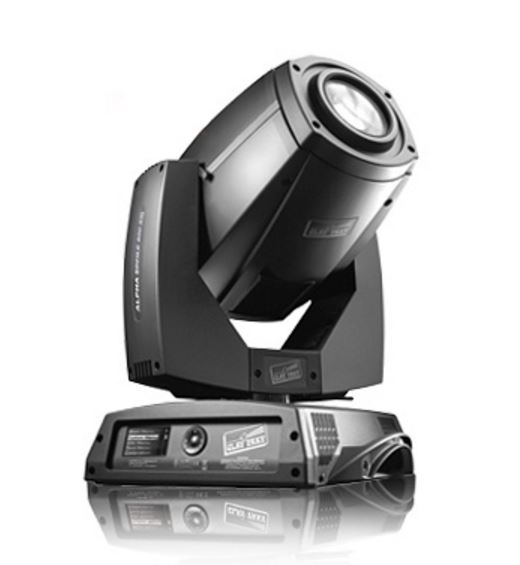The Wiz Live! Lighting Design and Fixtures

- NBC’s “The Wiz Live!,” drew 11.5 million viewers and critical acclaim for its debut. The visual show, with lighting design by Allen Branton, featured Clay Paky Alpha 800 Profile and Sharpy fixtures in the rig and grandMA2 light consoles for lighting and show control. A.C.T Lighting is the distributor of both product lines in North America.
Promo poster for The Wiz Live! A spin on the classic The Wizard of Oz story
Directed by Kenny Leon and Matthew Diamond, “The Wiz Live!” followed “Peter Pan” and “The Sound of Music” in NBC’s continuing series of live theatrical productions. “The Wiz” revamps the classic story of “The Wizard of Oz” with an African-American cast as audiences watch young Dorothy swept up in a tornado, following the yellow brick road to Oz then finding her way home to Kansas.
A Broadway show presented live on television is “something of a hybrid of TV and theater,” said Kevin Lawson, one of three lighting directors alongside Felix Peralta and Darren Langer.
“You don’t usually find live scripted shows on television,” Lawson said. “With TV specials you’re in and out in three to five days. With ‘The Wiz Live!’ we were at Grumman Studios in Bethpage, Long Island rehearsing for seven weeks before the airdate. It was a luxurious amount of time!”
NBC’s two previous live theatrical productions involved multiple soundstages; the pirate ship and Neverland set pieces for “Peter Pan,” for example, were erected on separate stages.
“The choice was to make ‘The Wiz Live!’ more theatrical, set in a stage box,” Lawson said. “There was an LED scenic back wall and three LED portals that opened and closed and an extensive amount of automated scenery that tracked in and out.”
Branton and his lighting team collaborated with production designer Derek McLane to establish the mood and look for each scene.
“He had very beautiful scene by scene renderings, then we worked out from there with the songs that added dynamics,” Branton said. “Oz was a fantastic place but Kenny Leon still wanted it to have some rules: You couldn’t do something just because it looked cool; it had to be grounded in some reasoning. That connected things more with the characters and made you believe in the story.”
A daily selection of features, industry news, and analysis for tech managers. Sign up below.
Fifteen cameras recorded the live production, which was rebroadcasted before Christmas.
“We had to be flexible with the rig so we could light all the actors and scenery,” Lawson said. “And because there was no studio audience and there was live singing, everything on set had to be quiet. That weighed into our choices of lights. We couldn’t have fixtures that sounded like a jet engine overhead.”
Lighting vendor Atomic Lighting ran tests in its Lititz, Pennsylvania headquarters to compare potential fixtures for the show.
“They did decibel readings of fan noise, the lights at rest and moving – where they fell in the noise spectrum,” Lawson explains. “That’s something we don’t care about for live rock shows or award shows, but on a small stage with live singers it was crucial.”
"[Clay Paky’s Alpha 800 Profile moving beam shaper] was incredibly quiet. It was the shutterable, hard-edge light we were looking for and the fact that it was small and quiet put it over the top,” said Lawson. “It became our hard-edge workhorse light.”
Branton and his team deployed 60 Alpha 800s and twenty Sharpys were also selected. The Clay Paky contingent formed about half of the total automated fixtures on the show.
“With every production we try to find more ways to use Sharpy,” said Lawson. “Everyone has seen its famous pencil beams, and we used them in the Emerald City ballet, which was staged in a nightclub with Sharpy in its Sharpy mode. But we also used Sharpys extensively with frost, with gobos, dappling the scenery with a wonderful quality of light that punches through other treatments.”

Clay Paky Alpha 800 Profile - 60 were used for The Wiz Live! Branton, Lawson and Peralta worked with lighting programmers Kirk Miller and Eric Marchwinski to program the show on two grandMA2 light consoles running v. 3.1.2.5 software; an extra desk was on hand as back up.
“We prefer to use the grandMA2 light for TV because we use it with fader wing, and it adapts easily to our configuration of TV monitors. Our workflow is designed around it,” said Peralta.
“We had the luxury of a lot of time for this production, so come show day we were ready to run the whole show in one cue stack,” he notes. “We integrated a lot of show control through grandMA2, too. The console triggered a lot of events on the video side via MIDI show control, and it worked very well.”
Peralta and Marchwinski spent a week in New York City doing pre-viz with MA 3D before moving on site at Grumman Studios.
“Earlybird Visual built our 3D models, which allowed us to envision all the scenes we’d see during rehearsals on the single stage with the LED wall and set pieces tracking in and out. That helped us to spot any potential pitfalls and get a good grasp of the lighting before the load in at Grumman. We got a head start and were in good shape when we arrived at the studio.”
"One of the best things about the MA2 platform is its ability to get to the end result so quickly," Peralta said. "It can easily adapt to everyone’s workflow. So much that once rehearsals were winding down and we were at the point where Kirk or Eric were basically playing back the show, I was able to focus on making adjustments while looking at the TV monitors without having the production wait for us. The platform, the system and the software are just that solid.”
The AVNetwork staff are storytellers focused on the professional audiovisual and technology industry. Their mission is to keep readers up-to-date on the latest AV/IT industry and product news, emerging trends, and inspiring installations.
